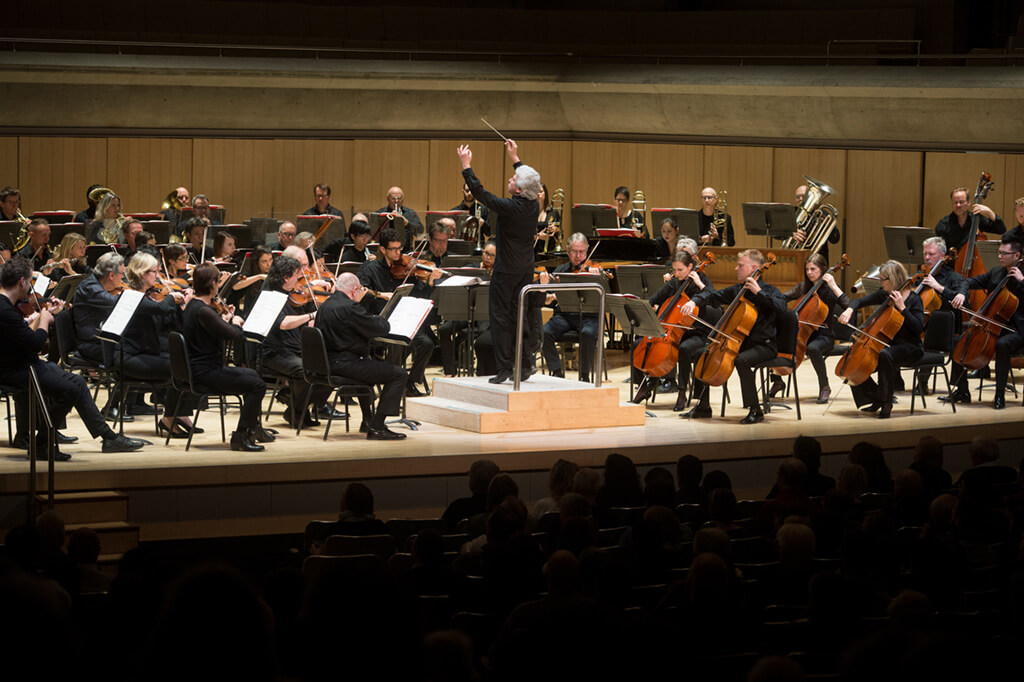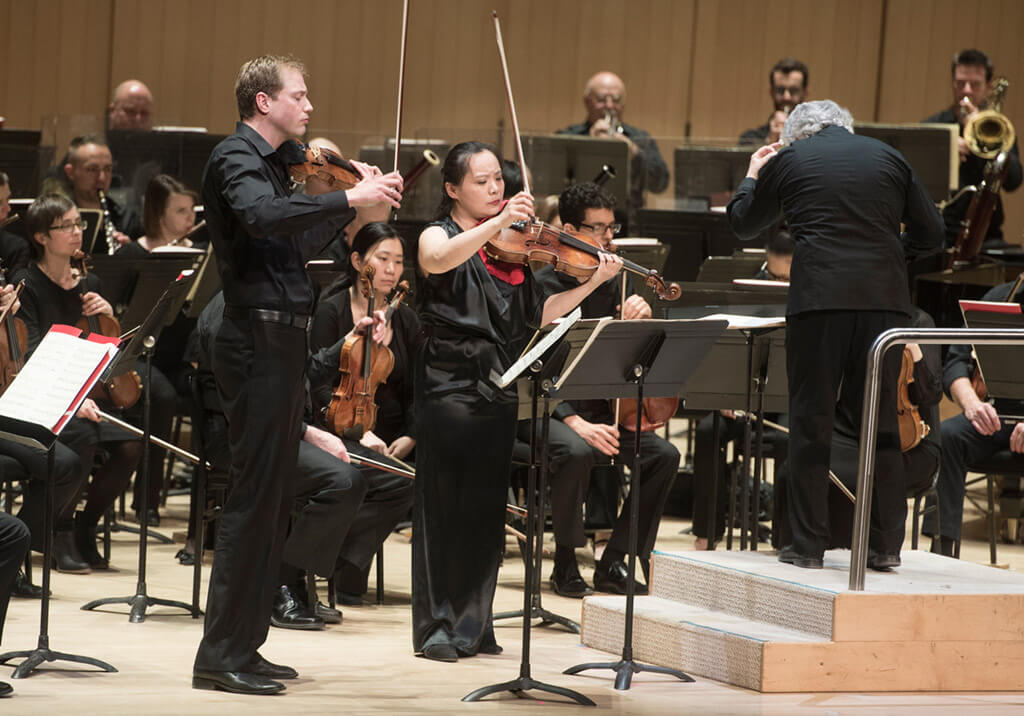
New Creations Festival: Toronto Symphony Orchestra with Jonathan Crow and Teng Li (soloists). Peter Oundjian (conductor) at Roy Thomson Hall, Saturday, March 10, 2018.
I’m not sure what was more depressing: watching Peter Oundjian make a speech closing 13 years of the New Creations Festival, or the audience who seemed to have no idea this would be the last one they will ever see.
Last night marked the third and final night of the three-day festival that was unceremoniously killed-off in a press release last week announcing the Toronto Symphony Orchestra’s 2018–19 season.
News of the festival’s demise garnered barely a mention by legacy media outlets, making one question the level of indifference towards new music in Toronto. But judging from the near-soldout crowd at last nights event, there was no apathy in sight.
Starting with John Adams’ decade-old Doctor Atomic Symphony, it remained a robustly muscular work rooted in Adams’ multi-layered latticework of colours leavened by flights of energetic fancy and flashes of sulky noir.
Written as a stand-alone companion to his opera of the same name, the TSO performed it with an unusual precision. Oundjian relished in the surreal sections highlighted by fast, thumping subdivisions that kept the 23-minute guide to strange places prowling forward. The audience seemed captured in what was the TSO’s finest performance of the evening.
Salonen’s Insomnia, the darkest work on the program, marked a fascinating milestone in the composer’s decade-long search for music based on a physical, rather than an intellectual or mental existence. The piece portrayed the experience, along with its immediate sensory impact, of insomnia imagined it in sound.
Oundjian, who stayed awake for the entire thing, conducted the psychology of sleeplessness with an admirable attention to detail — especially in the anxious moments that evoked the sense of time slowing down.
The TSO, flanked by a battery of five percussionists and a murder of Wagner tubas nested in the back, eventually landed on an adagio that cleverly symbolized the moment sleep finally came — only to be interrupted moments later by the arrival of the sun at dawn. It was a brilliant end, if not unsettling.
The sole premiere of the night was up to Gary Kulesha’s Double Concerto scored for violin, viola and orchestra. Much like the aforementioned sighting of the endangered Wagner tubas in Salonen’s Insomnia, Kulesha’s Double Concerto was made even more rarefied by virtue of being scored for violin and viola. The only two other concertos for violin and viola are by Mozart and Britten.

The piece itself opened with virtuoso soloists, Jonathan Crow and Teng Li supported by members of their respective sections as a kind of string sextet.
Spread over three moments, Crow and Li were impressively well-matched, and navigated Kulesha’s expertly written passages with ease. Most impressive was Li’s uncanny ability to keep her viola as an equal partner to Crow’s more agile violin, which at an octave higher, was at an unfair advantage.
The concerto contained many compelling ideas, but its disappointment was found in a general neglect for the use of the orchestra. While one could argue Kulesha’s goal was an economy of means, the sparse instrumentation came across as a missed opportunity to transcend the bewitching alchemy between Crow and Li’s lyrical playing. An example was found in the percussion writing, which despite the possibilities available, was relegated to a pale snare drum and a lonesome triangle.
One wonders if this was the result of a fear that the orchestra might overshadow the viola, a relatively quiet instrument. While this is a legitimate concern, I would argue his approach created the more severe problem of leaving the orchestra sounding like an empty room in need of some basic creature comforts.
All in all, this penultimate collection of oddities will have to suffice as our final memory of the NCF. While I would describe the feeling as a little like witnessing the family dog being taken out back and shot, I’m hopeful that whoever ends up taking the baton after Oundjian leaves will consider resurrecting this incredibly important festival. Until then, it will be sorely missed.
LUDWIG VAN TORONTO
- THE SCOOP | Royal Conservatory’s Dr. Peter Simon Awarded The Order Of Ontario - January 2, 2024
- THE SCOOP | Order of Canada Appointees Announced, Including Big Names From The Arts - December 29, 2023
- Ludwig Van Is Being Acquired By ZoomerMedia - June 12, 2023



